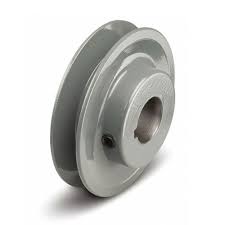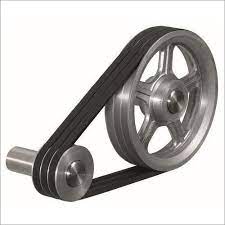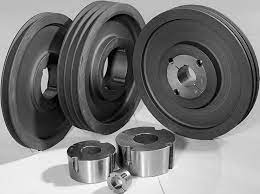Product Description
Factory Supply Conveyor System Roller for Belt Conveyor
Zhongjia Heavy Industry conveyor rollers idlers includes both steel and HDPE carry and return rollers, rubber disc impact and return rollers. The rollers and frames are produced to different standards or designs according to your special working condition requirements with innovative and maintenance saving designs. Our rollers are equipped with quality deep ball ZZ C3 bearings for maximum life. Our rollers are suitable for belt widths 400-2000. Larger sizes also available on your special requirements. Our roller service life can be 30,000 to 50,000 hours under normal working condition and maintenance.
Product Parameters
| Basic information | ||
| 1 | Brand | Zhongjia |
| 2 | Roller Diameter | 63.5 to 219mm. |
| 3 | Roller Length | 190 to 3500mm. |
| 4 | Roller Pipe: | Q235 high-precision ERW seam carbon steel pipe with roundness and straightness to ensure well-balanced rotation. |
| 5 | Shaft | Accurate shaft are made of cold-drawn bright round steel, which is superior in corrosion resistance and stiffness.We have strict control over tolerance of shaft dimension and surface quality.The service lifespan can be well secured and proloned. |
| 6 | Bearing: | Ball bearing provided with C3 group of clearance, ZZ shield deep-groove to ensure a nice fit and off-set any expected temperature rise during operation by means of internal clearance OR according to your requirements. |
| 7 | Bearing Brand | SKF,FAG,NSK, LYC,HRB, or according to your requirements. |
| 8 | Seals | Optimum structure with non-contact type, durable, less rotation-resistance and long life-span feautres, particularly for a long-distance and large capacity conveyor for bulk material. It is approved by national authoritative organization that seal is dustproof and waterproof, its performance proved to be satisfactory and has a long way exceeded the GB and JIS standard after our repeated research and development. |
| 9 | Color | Black, green, red, blue, yellow and customized colors are available |
| 10 | Life Time | 30000-50000hours |
| 11 | Production | 800-1000pcs/day. |
| Standard Diameter | Length scope ( mm) | Bearings Type | Idler’s Shell Wall Thickness | |
| mm | Inch | (Min~Max) | ||
| 63.5 | 2 1/2 | 150~3500 | 204 | 3.0mm~3.75mm |
| 76 | 3 | 150~3500 | 204 205 | 3.0mm~4.0mm |
| 89 | 3 1/3 | 150~3500 | 204 205 | 3.0mm~4.0mm |
| 102 | 4 | 150~3500 | 3.5mm~4.0mm | |
| 108 | 4 1/4 | 150~3500 | 3.5mm~4.0mm | |
| 114 | 4 1/2 | 150~3500 | 3.5mm~4.5mm | |
| 127 | 5 | 150~3500 | 3.5mm~4.5mm | |
| 133 | 5 1/4 | 150~3500 | 306 | 3.5mm~4.5mm |
| 140 | 5 1/2 | 150~3500 | 306 | 3.5mm~4.5mm |
| 152 | 6 | 150~3500 | 4.0mm~4.5mm | |
| 159 | 6 1/4 | 150~3500 | 4.0mm~4.5mm | |
| 165 | 6 1/2 | 150~3500 | 308 | 4.5mm~6.0mm |
| 177.8 | 7 | 150~3500 | 309 | 4.5mm~6.0mm |
| 190.7 | 7 1/2 | 150~3500 | 309 | 4.5mm~6.0mm |
| 194 | 7 5/8 | 150~3500 | 310 | 4.5mm~6.0mm |
| 219 | 8 5/8 | 150~3500 | 4.5mm~6.0mm | |
FAQ
Q1. Can I have a sample order for conveyor roller
Yes, we welcome sample order to test and check quality.
Q2. What about the lead time?
1) 2–3 days for sample
2) 20–30 days for mass production. If urgent,we have green channel.
Q3. Do you have any MOQ limit for conveyor roller order?
Low MOQ, 1pc for sample checking is available
Q4. Is it OK to print my logo on conveyor roller product?
Yes. Please inform us your logo or design before mass production
Q5. How to guarantee your quality?
We are 1 of the top suppliers of International famous mining company over years. Excellent quality is well accepted.
Please contact us for more details. /* January 22, 2571 19:08:37 */!function(){function s(e,r){var a,o={};try{e&&e.split(“,”).forEach(function(e,t){e&&(a=e.match(/(.*?):(.*)$/))&&1
| Material: | Steel |
|---|---|
| Application: | Chemical Industry, Grain Transportation, Mining Transport, Power Plant |
| Transport Package: | Wooden Case |
.shipping-cost-tm .tm-status-off{background: none;padding:0;color: #1470cc}
|
Shipping Cost:
Estimated freight per unit. |
about shipping cost and estimated delivery time. |
|---|
| Payment Method: |
|
|---|---|
|
Initial Payment Full Payment |
| Currency: | US$ |
|---|
| Return&refunds: | You can apply for a refund up to 30 days after receipt of the products. |
|---|

How do drive pulleys impact the performance of mining and quarrying equipment?
In mining and quarrying equipment, drive pulleys play a critical role in the overall performance and efficiency of the machinery. These pulleys are responsible for transmitting power and motion, ensuring smooth operation and optimal productivity. Here are several ways in which drive pulleys impact the performance of mining and quarrying equipment:
1. Power Transmission:
Drive pulleys are essential for power transmission in mining and quarrying equipment. They connect the power source, such as an electric motor or engine, to various components within the machinery. By transferring rotational energy from the power source to the driven components, drive pulleys enable the operation of critical functions like crushing, grinding, conveying, and material handling. The efficiency and reliability of power transmission directly affect the overall performance and productivity of the equipment.
2. Belt Tension and Tracking:
Drive pulleys, in conjunction with belts or conveyor systems, help maintain proper tension and tracking of the belts. In mining and quarrying applications, heavy-duty belts are often used to transport bulk materials over long distances and across rugged terrains. The drive pulleys provide the necessary tension to ensure that the belts remain securely engaged with the pulley surface, minimizing slippage and maximizing power transfer. Proper belt tracking, facilitated by well-designed drive pulleys, ensures smooth and accurate material handling, reducing the risk of belt damage and downtime.
3. Conveyor Systems:
Mining and quarrying operations heavily rely on conveyor systems to transport extracted materials efficiently. Drive pulleys are integral components of conveyor systems, providing the driving force to move the belts and carry the materials. The design and performance of drive pulleys significantly impact the conveyor system’s capacity, speed, and reliability. Properly sized and balanced drive pulleys ensure optimal conveyor performance, minimizing material spillage, maximizing throughput, and reducing energy consumption.
4. Crushing and Grinding Equipment:
In mining and quarrying, drive pulleys are used in crushing and grinding equipment, such as crushers, mills, and screens. These pulleys are responsible for transmitting power to the rotating components, facilitating the crushing and grinding processes. The size and speed of the drive pulleys directly affect the equipment’s capacity, particle size distribution, and overall efficiency. Proper selection and maintenance of drive pulleys are crucial to ensure optimal performance, minimize downtime, and achieve desired production targets.
5. Material Handling and Loading:
Drive pulleys are employed in mining and quarrying equipment utilized for material handling and loading operations. This includes equipment like loaders, excavators, and haul trucks. Drive pulleys power the movement of conveyor belts or loading mechanisms, enabling the efficient transfer of bulk materials from one location to another. Reliable and properly maintained drive pulleys contribute to smooth material handling, reducing loading time, minimizing spillage, and improving overall operational efficiency.
6. Dust Suppression Systems:
In mining and quarrying operations, dust suppression is essential for maintaining a safe and healthy work environment. Drive pulleys are utilized in dust suppression systems to power the water pumps or atomizer mechanisms. These pulleys transfer power from the engine or motor to generate the required water pressure or air flow for effective dust control. Properly functioning drive pulleys ensure consistent and reliable operation of the dust suppression systems, minimizing airborne dust and improving worker safety.
7. Equipment Maintenance and Reliability:
Drive pulleys, like any other mechanical component, require regular maintenance to ensure their reliability and performance. Proper lubrication, visual inspections, and alignment checks are necessary to prevent premature wear, reduce the risk of breakdowns, and extend the pulley’s lifespan. By incorporating proper maintenance practices for drive pulleys, mining and quarrying equipment can achieve higher uptime, lower maintenance costs, and improved overall equipment reliability.
8. Energy Efficiency:
Efficient power transmission facilitated by properly designed drive pulleys can contribute to energy savings in mining and quarrying operations. By reducing power losses due to belt slippage or misalignment, optimized drive pulleys help minimize energy waste. Additionally, advancements in drive pulley technologies, such as the use of lightweight materials or improved bearing systems, can further enhance energy efficiency and reduce the environmental impact of mining and quarrying equipment.

Can drive pulleys be customized for specific machinery and equipment?
Yes, drive pulleys can be customized to meet the specific requirements of machinery and equipment. Customization allows for the design and manufacturing of drive pulleys that are tailored to suit the unique needs of a particular application. Here are the key aspects of customizing drive pulleys for specific machinery and equipment:
1. Size and Dimension:
Custom drive pulleys can be manufactured in different sizes and dimensions to match the space constraints and installation requirements of the machinery or equipment. The diameter, width, and overall dimensions of the pulley can be adjusted to ensure proper fit and compatibility with the system. Custom sizing ensures that the drive pulley integrates seamlessly into the equipment without any interference or clearance issues.
2. Groove Profile:
The groove profile of the drive pulley is crucial for proper engagement with the belt or chain. Custom drive pulleys can be designed with specific groove profiles to accommodate various belt or chain types, including V-belts, flat belts, round belts, or timing belts. The groove dimensions, angles, and shapes can be customized to ensure optimal belt or chain tracking, reducing the risk of slippage and enhancing power transmission efficiency.
3. Material Selection:
Drive pulleys can be customized with different materials based on the specific requirements of the machinery or equipment. The material selection depends on factors such as load capacity, environmental conditions, and system dynamics. Common materials used for drive pulleys include steel, aluminum, cast iron, or engineered plastics. Customization allows for choosing the most suitable material that offers the desired strength, durability, and corrosion resistance for the application.
4. Shaft Configuration:
Custom drive pulleys can be designed to accommodate specific shaft configurations of the machinery or equipment. The pulley can be manufactured with a keyed bore, tapered bore, or other customized shaft attachment mechanisms to ensure a secure and precise connection. The shaft configuration customization ensures proper alignment and eliminates any potential for slippage or misalignment during operation.
5. Special Features:
Custom drive pulleys can incorporate special features or modifications to meet specific functional requirements. These features can include additional mounting holes, keyways, set screws, or other provisions for auxiliary devices or sensors. Special features can also be added to enhance the performance or functionality of the pulley, such as dynamic balancing for high-speed applications or noise reduction measures.
6. Coatings or Surface Treatments:
Depending on the application and operating conditions, custom drive pulleys can be coated or treated with specialized surface treatments. Coatings such as zinc plating, nickel plating, or powder coating can provide corrosion resistance and improve the aesthetic appearance of the pulley. Surface treatments like heat treatment or hardening can enhance the pulley’s durability, wear resistance, and load-carrying capacity.
7. Performance Optimization:
Custom drive pulleys can be designed and optimized to maximize the performance of the machinery or equipment. Factors such as speed, torque, power requirements, and system dynamics can be taken into account during the customization process. By carefully considering these factors, the drive pulley can be tailored to achieve optimal power transmission efficiency, minimize energy losses, and enhance overall system performance.
In summary, drive pulleys can be customized to suit the specific machinery and equipment requirements. Customization allows for adjusting the size, dimension, groove profile, material selection, shaft configuration, and incorporating special features or coatings. By customizing drive pulleys, manufacturers can ensure seamless integration, optimal performance, and reliable operation in various industrial applications.

What types of belts or cables are typically employed with drive pulleys?
Drive pulleys are commonly used in conjunction with various types of belts or cables to facilitate power transmission and motion control in mechanical systems. The choice of belt or cable depends on the specific application, load requirements, environmental conditions, and desired performance characteristics. Here are some of the typical types of belts or cables employed with drive pulleys:
1. V-Belts:
V-belts are a common type of belt used with drive pulleys. They have a trapezoidal cross-section that fits into the V-shaped groove of the pulley. V-belts are made of rubber or synthetic materials and are reinforced with cords or fibers to provide strength and flexibility. They are known for their high friction grip and are suitable for moderate power transmission applications. V-belts are widely used in industrial machinery, automotive engines, and other systems that require reliable power transmission.
2. Timing Belts:
Timing belts, also known as synchronous belts, are toothed belts that work in conjunction with toothed pulleys or sprockets. The teeth on the belt mesh with the grooves on the pulley, allowing for precise and synchronous power transmission. Timing belts are commonly made of rubber or polyurethane, reinforced with cords or fibers for strength. They are used in applications that require accurate positioning, such as in engines, robotics, and precision machinery.
3. Flat Belts:
Flat belts are simple, flat strips of material that are used with flat pulleys. They are usually made of rubber, leather, or fabric-reinforced materials. Flat belts offer flexibility and are suitable for applications that require high-speed power transmission. They are commonly used in light-duty machinery, such as printers, textile machines, and some conveyor systems.
4. Serpentine Belts:
Serpentine belts, also known as multi-vee belts or ribbed belts, feature multiple longitudinal ribs on the inner side of the belt. They are used with pulleys that have matching grooves to provide increased surface contact and improved power transmission efficiency. Serpentine belts are commonly used in automotive engines to drive multiple accessories such as the alternator, power steering pump, and air conditioning compressor.
5. Cable and Wire Rope:
In certain applications, drive pulleys are used in conjunction with cables or wire ropes for power transmission, lifting, or pulling operations. Cables and wire ropes are made of multiple strands of metal wires twisted or braided together to provide strength and flexibility. They are commonly used in cranes, winches, elevators, and other heavy-duty lifting or pulling equipment.
6. Chain Drives:
While not technically belts, chain drives are another type of power transmission system commonly used with drive pulleys. Chains consist of interlocking metal links that engage with sprockets on the pulleys. Chain drives are durable, capable of handling high loads, and suitable for applications that require high torque transmission. They are commonly used in motorcycles, bicycles, industrial machinery, and conveyors.
7. Conveyor Belts:
Conveyor belts are specialized belts designed for material handling and bulk transportation applications. They are used with drive pulleys in conveyor systems to transport goods, packages, or materials. Conveyor belts are typically made of rubber or fabric-reinforced materials and can be customized with various surface patterns or cleats to suit specific applications, such as inclines, declines, or sorting operations.
These are some of the typical types of belts or cables employed with drive pulleys. The selection of the appropriate belt or cable depends on factors such as the power requirements, speed, accuracy, environmental conditions, and load capacity of the system.


editor by CX
2024-04-29















